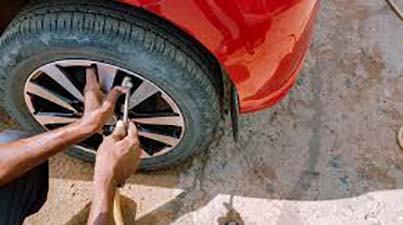
PROPERLY maintaining your tyres is just as important as maintaining the rest of your car.
Improper tyre care can lead to problems ranging from excessive wear to premature failure, and investing in a new set of tyres can be a costly affair.
Here are a few things you should do to get the most from your tyres and identify any problems:
Inspection
A proper visual inspection can help prevent tyre failure at an early stage. Do check the tyre surface and sidewall for any irregularities like bulges, cuts and cracks. Remember to check the inner surface too. Cracks due to stones, glass or other debris on the road can get wider over time and result in tyre failure. Check your rims too, as a damaged one can also lead to tyre failure over a period of time and should be replaced as soon as possible. If you notice a nail embedded in your tubeless tyre but the pressure is normal, do not pull it out as this will cause the air to escape. Get it repaired at the earliest.
Checking tread wear
Tyres have a tread-wear indicator marked by a small arrow on the outer wall of the tyre. If you follow the arrow on the tread face, you will find the wear indicator on the tyre’s surface. If the outermost layer of the tyre touches the tread wear indicator, it is time for a replacement. Any tyre with less than 2mm of depth left should be replaced as soon as possible.
Check tyre pressure
It is recommended that you get your tyre pressure checked every two weeks, including that of the spare. This is important as improper inflation can result in uneven wear of the tyre surface. Also, wrongly inflated tyres have a higher chance of bursting when running on highways. Make sure that you get the tyres checked when they are cold. The recommended tyre pressure is usually mentioned on the driver-side door sill and in the owner’s manual.
Tyre rotation
Rotating tyres is the best way to have equal wear across all tyres and thus extend their service life. The rotation of tyres depends on the type of vehicle, i.e. front-wheel drive, rear-wheel drive or four-wheel drive. Wheel rotation is recommended every 10 000km.
Wheel alignment and balancing
Wheel alignment is the calibration of suspension and tie-rod settings. If your car is pulling to one side or suffering from uneven tyre wear, or there are vibrations in the steering, getting your wheels aligned can fix those issues. Steering vibrations can also be due to an unbalanced tyre. To balance it, the wheel is rotated at a high speed to check if there is an imbalance. Weights are then added to the rim to balance it out. It is recommended to balance your tyres every 5 000km.
Changing tyres at the right time
Experts suggest that the right time to discard the old tyre and go for a new tyre is between six to 10 years. Here, six years is suggested ideal; however, 10 years is the extreme limit, that too, when you find every bit of the tyre good. The wear and tear of the tyres also depend upon several factors like driving style, the total number of kilometres driven, weather conditions in the region and so on. — Wires
